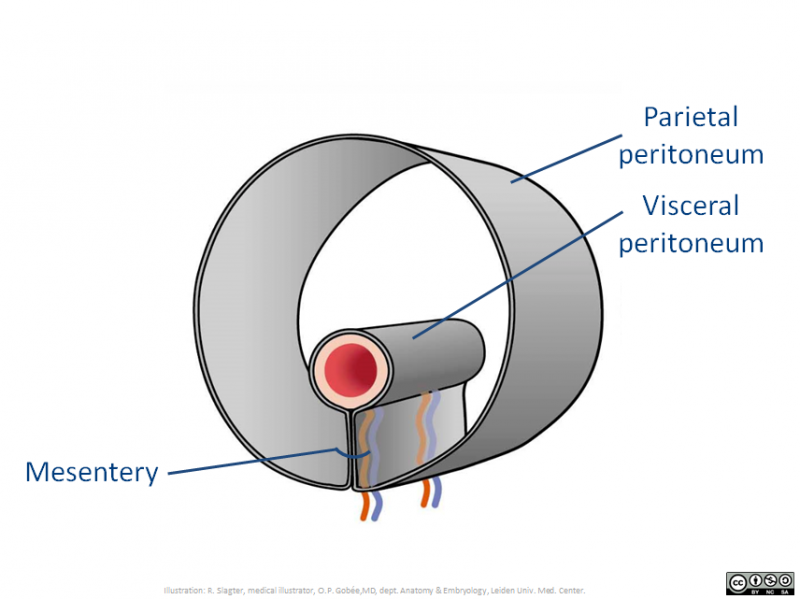By O.P. (Paul) Gobée, dept. of Anatomy and Embryology, Leiden University Medical Center, last update: 20 sept 2022
Where is the peritoneum?


The yellow shaded area is a distinct space, discussed later in this series.
The peritoneal cavity forms roughly half the (anterior to posterior) depth of the abdomen. The other half of the abdomen lies behind the peritoneum. That is named the retroperitoneal area. To help understand, some structures have been labeled.
Note: It is shown too simplified here. Only the peritoneum that lines the body walls is shown here. Furthermore, the image might give the impression that organs lie freely in the peritoneal cavity which is not true. See the section below.
The intestines become surrounded by peritoneum


(In reality it’s just the other way around: in the beginning there’s a solid mass of tissue around the intestine or organ (called 'mesenchyme'). Within this tissue a large cavity forms around the organ, leaving only peritoneal tissue remaining on the inside of the abdominal wall and surrounding the organs. But the balloon metaphor sticks better in the mind.) '.
The layer of peritoneum that lines the body wall is called 'parietal peritoneum' (Lat. paries=wall). The layer that is adhered to an organ is called 'visceral peritoneum' (Lat. viscus=internal organ). The double layer of peritoneum that connects the body wall and the gut and that contains the blood vessels, nerves and lymphe vessels that supply the gut, is called 'mesentery'.
The relation of the peritoneum to the gut
The heart, the lungs and the gut are surrounded by respectively the pericardium, the pleura and the peritoneum. Their anatomical configuration and functions are similar. They are explained by the classical balloon metaphor that is brought alive in this video.
(6m19s) 
The intact peritoneum seen in reality
The video to the left shows the intact peritoneum after removal of the body-wall in a dissection specimen. The peritoneum is then opened to show the structures lying inside the peritoneal cavity. See minutes: 1:57 - 2:20
(0m30s) 
 View license
View license If you use this item you should credit it as follows:
- For usage in print - copy and paste the line below:
- For digital usage (e.g. in PowerPoint, Impress, Word, Writer) - copy and paste the line below (optionally add the license icon):




Comments